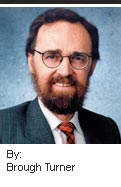|
December 2008 | Volume 11/ Number 12
Next Wave Redux
NextGen WiFi and Wireless Disruption
WiFi is a single brand for a series of technologies operating in several different spectral bands. WiFi device manufacturers must meet certain standards but the devices themselves do not require licenses. This has lead to a vibrant market, widespread adoption and clear technology leadership. As an example of WiFi’s technology leadership compare WiFi with so-called “4G” systems like WiMAX (News - Alert) and GSM’s Long Term Evolution (LTE). These 4G systems are based on Orthogonal Frequency Division Multiplexing (OFDM). Today there are a few million WiMAX devices deployed, and zero LTE (News - Alert) devices. But WiFi has already adopted OFDM in versions 802.11a (1999) and 802.11g (2003). It’s OFDM that allowed WiFi to achieve 54 Mbps operation. And it’s WiFi that saw over 400 million OFDM-capable devices shipped in 2008 alone. Now 802.11y defines how new high-powered WiFi devices can operate in the US in the 3650-3700 MHz band (at ranges up to 5 km!). Because there are other users in this band (including satellite earth stations), it’s being made available under a novel “light licensing” scheme where a licensed station provides a “dependent station enablement” (DSE) signal. License-exempt devices transmit only while they are receiving periodic DSEs. 802.11y provides DSE plus enhanced carrier sensing and energy detection mechanisms, and channel switching coordination. As a result, 802.11y provides an excellent template for operation as a “secondary user” in any spectral band, even the TV “white spaces” (TVWS) should they become available. Of course TVWS are highly political, but almost all the spectrum above 2.7 GHz is under-utilized, although it’s been assigned piecemeal for various purposes. Recapturing this spectrum for an exclusive use like mobile telephony is politically difficult. However, allowing “secondary” use of otherwise idle spectrum is less controversial. 802.11y provides the solution by granting channel access dynamically based on primary user avoidance, location and/or time. Assuming 802.11y is proven at 3650 MHz, it’s the perfect vehicle to support secondary operation at 3.4 GHz — 4.2 GHz and these discussions have begun. That’s 800 MHz of spectrum — enough for multi-gigabit operation. With ranges up to 5 km, one could easily see a consumer-driven mesh network bypassing phone companies and cable companies for first mile Internet access. Or something else. The point is WiFi gear with “secondary access” to large swaths of spectrum is a game-changer. IT Brough Turner (News - Alert) is Senior VP of Technology, CTO and Co-Founder of NMS Communications (www.nmscommunications.com). Today @ TMC
Headlines
Upcoming Events
MSPWorld
The World's Premier Managed Services and Cloud Computing Event Click for Dates and Locations Corporate News
|
|





 A recent standard, IEEE (
A recent standard, IEEE (
